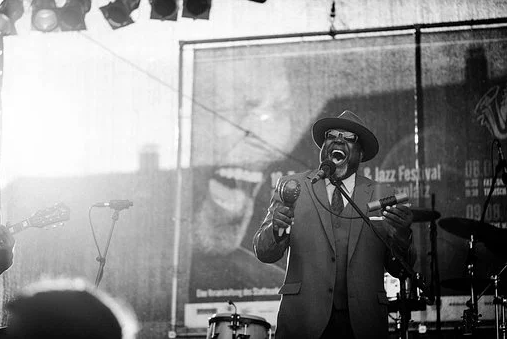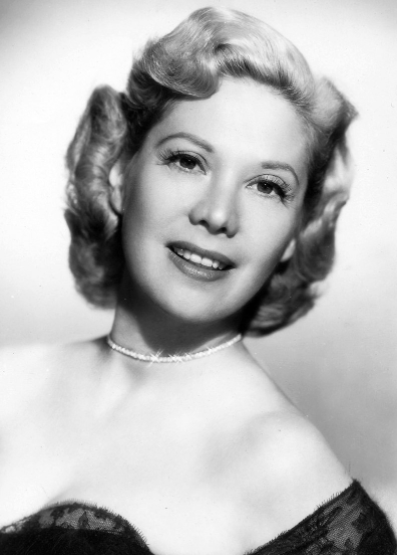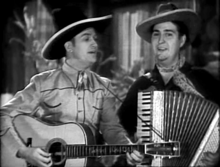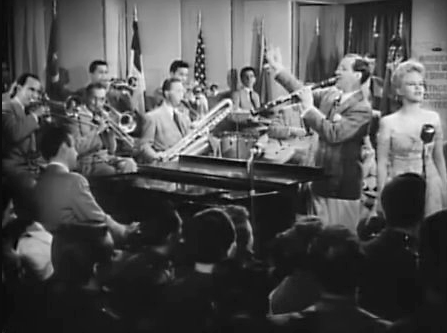Music is the art of arranging the sounds in time through different elements such as timbre, rhythm, harmony, and melody. In human societies, it has been a universal cultural aspect. Music has changed over eras. Each era comes with a new music and band style. Talking about the music of the 1940s, it was built around jazz and famous and big band styles. Artists such as Count Basie, Rosemary Clooney, and Artie Shaw helped define the musical age with their unique style of entertaining crowds through the music.
1940s music is known as Bebop-era Jazz. Also, it was an era of WWII, in which many musical acts went out of their way to reflect the pain the country was going through. The 1940s were a period for many revolutionary artists who marked the history of music. Artists of this era were also known as innovators of their time. Advances such as the invention of the solid-body electric guitar by Les Paul in 1941 were to influence the most popular musical acts and styles of the era.
Top Musical Acts of the 1940s
Music from WWII and the U.S.O.
When it became clear that the United States was going to enter WWII, patriotism was at its peak and influenced pop culture, such as the music industry. In 1938, Kate Smith released a version of God Bless America by Irving Berlin. It climbed the charts as new music and was then reissued in 1940 and 1942.
On the other hand, Andrews Sisters and Bing Crosby released songs in the 1940s that refer to the military and war. Andrews made two hit songs in 1941 and 1943 named Boogie Woogie Bugle Boy and Shoo-Shoo Baby. Crosby’s, on the other hand, made a hit song named I’ll Be Home For Christmas.
Loss and Nostalgic Musical Acts
Most of the songs were about war such as Remember Pearl Harbor by Sammy Kaye (1942) and Gi Jive by Johnny Mercer (1944). These songs did not directly refer to the conflicts of the world or war but they often alluded to a feeling of nostalgia or loss. The musical acts in these songs were based on the distance between the lovers and waiting for the soldiers to return home.
Also, there were some other songs with the same musical acts such as:
- Till Then by Mills Brothers (1944)
- I’ll Walk Alone by Dinah Shore (1944)
U.S.O Performances
Other songs in this era were aimed at fostering high morale by creating an optimistic image or making fun of the enemy. For example, Der Fuehrer’s Face by Spike Jones in 1943 and Praise the Lord and Pass the Ammunition by Kay in 1943 were the famous musical acts of such theme. Most of these songs were featured in war films in this era which were popular and plentiful.
In 1941, the United States Service Organizations (USO) were formed before the United States entered WWII. Many biggest and famous names in music and artists contributed to the war effort by providing performances through USO performances for service members and their families. The regular performers of USO performances were:
- Bob Hope
- Dinah Shore
- Lucille Ball
- Irving Berlin
- AI Jolson
- Glenn Miller
- Fred Astaire
- Judy Garland
- Frank Sinatra
- Bing Crosby
The Cowboy Singers of Country and Western
Country music became very popular in the 1940s. It was previously known as the Hillbilly genre and then folk and blues genre on the music charts. Later on, it was referenced as Country and Western music. The popularity of Western films supported this genre and Singing Cowboy movie stars (Gene Autry and Roy Rogers) were popular artists in this era.
In 1945, some of the greatest hits by Gene Autry were At Mail Call Today and Don’t Fence Me In, whereas Autry’s greatest hits from 1948 were Buttons and Bows and Here Comes Santa Claus. Roy Rogers, on the other hand, had top musical acts My Chickashay Gal (1947) and Blue Shadows on the Trail (1948).
Country music styles such as Honky-Tonk were popular during the decade with artists like Ernest Tubb and Hank Williams. Many popular artists jumped on the bandwagon with Andrew Sisters and Bing Crosby by releasing country songs. In the 1940s, women in country music were popular such as Jenny Lou Carson, Patsy Montana, and Carter Sisters hit the country music charts.
Big Bands – Swing And Jazz
Big Band music, a branch of swing and traditional jazz, reached its peak in the early 1940s. This genre focused on the leaders who conducted four-section musical ensembles. Usually, there were more than ten members. The four sections consisted of trumpets, saxophones, trombones, and rhythms. In rhythms, there could be guitar, drums, bass, and piano. The Dorsey brothers; Jimmy and Tommy exemplified the genre as Glenn Miller did. For more information on swing and jazz as popular music genres of the 1940s, check out our article, What Were the Hottest Pop Culture Trends of the 40s?
The top performers of the Big Bands in the 1940s were:
- Frank Sinatra (Harry James’ Band and Tommy Dorsey Orchestra)
- Ella Fitzgerald (Chick Webb Orchestra)
- Billie Holiday (Artie Shaw and the Gramercy Five and Count Basie Band)
- Doris Day (Les Brown Band)
- Helen Forrest (Harry James’ Band)
- Dick Haymes (Tommy Dorsey Orchestra)
- Bob Eberly (Glen Miller’s Orchestra)
Top Hits From The 1940s
| 1940 | 1941 |
| In The Mood – Glenn Miller | Maria Elena – Jimmy Dorsey |
| Maybe – The Ink Spots | God Bless the Child – Billie Holiday |
| Only Forever – Bing Crosby | Take The A Train – Duke Ellington |
| Frenesi – Artie Shaw | Yes My Darling Daughter – Dinah Shore |
| The Breeze & I – Xavier Cugat | We Three – The Ink Spots |
| 1942 | 1943 |
| White Christmas – Bing Crosby | You’ll Never Know – Dick Haymes |
| Jingle, Jangle, Jingle – Kay Kyser | Paper Doll – The Mills Brothers |
| Stormy Weather – Lena Horne | Ration Blues – Louis Jordan |
| Deep in the Heart of Texas – Gene Autry | As Time Goes By – Vera Lynn |
| Night & Day – Frank Sinatra | If I Had My Way – Kate Smith |
| 1944 | 1945 |
| I’ll Walk Alone – Dinah Shore | Till The End of Time – Perry Como |
| This Land Is Your Land – Woody Guthrie | Sentimental Journey – Les Brown |
| Swinging On A Star – Bing Crosby | Rum & Coca Cola – The Andrews Sisters |
| Shoo-Shoo Baby – The Andrews Sisters | Chickery Chick – Sammy Kaye |
| The Trolly Song – Judy Garland | Lover Man – Billie Holiday |
| 1946 | 1947 |
| Five Minutes More – Frank Sinatra | Open The Door, Richard! – Count Basie |
| To Each His Own – The Ink Spots | Heartaches – Ted Weems |
| Route 66 – Nat King Cole | Ballerina – Vaughn Monroe |
| Personality – Johnny Mercer | Near You – Francis Craig |
| Rainbow at Midnight – Ernest Tubb | Golden Earrings – Peggy Lee |
| 1948 | 1949 |
| Buttons & Bows – Dinah Shore | La Vie En Rose – Edith Piaf |
| Nature Boy – Nat King Cole | Mule Train – Frankie Laine |
| It’s Magic – Doris Day | Riders in the Sky – Vaughn Monroe |
| My Happiness – Ella Fitzgerald | Lovesick Blues – Hank Williams |
| Good Rockin’ Tonight – Wynonie Harris | A Little Bird Told Me – Evelyn Knight |
1940s Musical Acts – Famous Bands and Singers
The 1940s were a hard time because of World War II, so people needed to be entertained. There were artists who changed the music industry in this era. It was not only for Americans but for everyone around the world. There were few bands, artists, and musicians that portrayed the wartime within the lyrics of the songs. Some songs were about lovers waiting for their partners to come back from the war.
Some musical acts or songs were themed on the nostalgic vibes that reminded the soldiers about their homeland. Other than war songs, few Big Bands worked on the entertainment of the public. During the 1940s, the Singing Cowboys of Country and Western had the greatest music charts. It was the time when they made their mark in the history of music.





